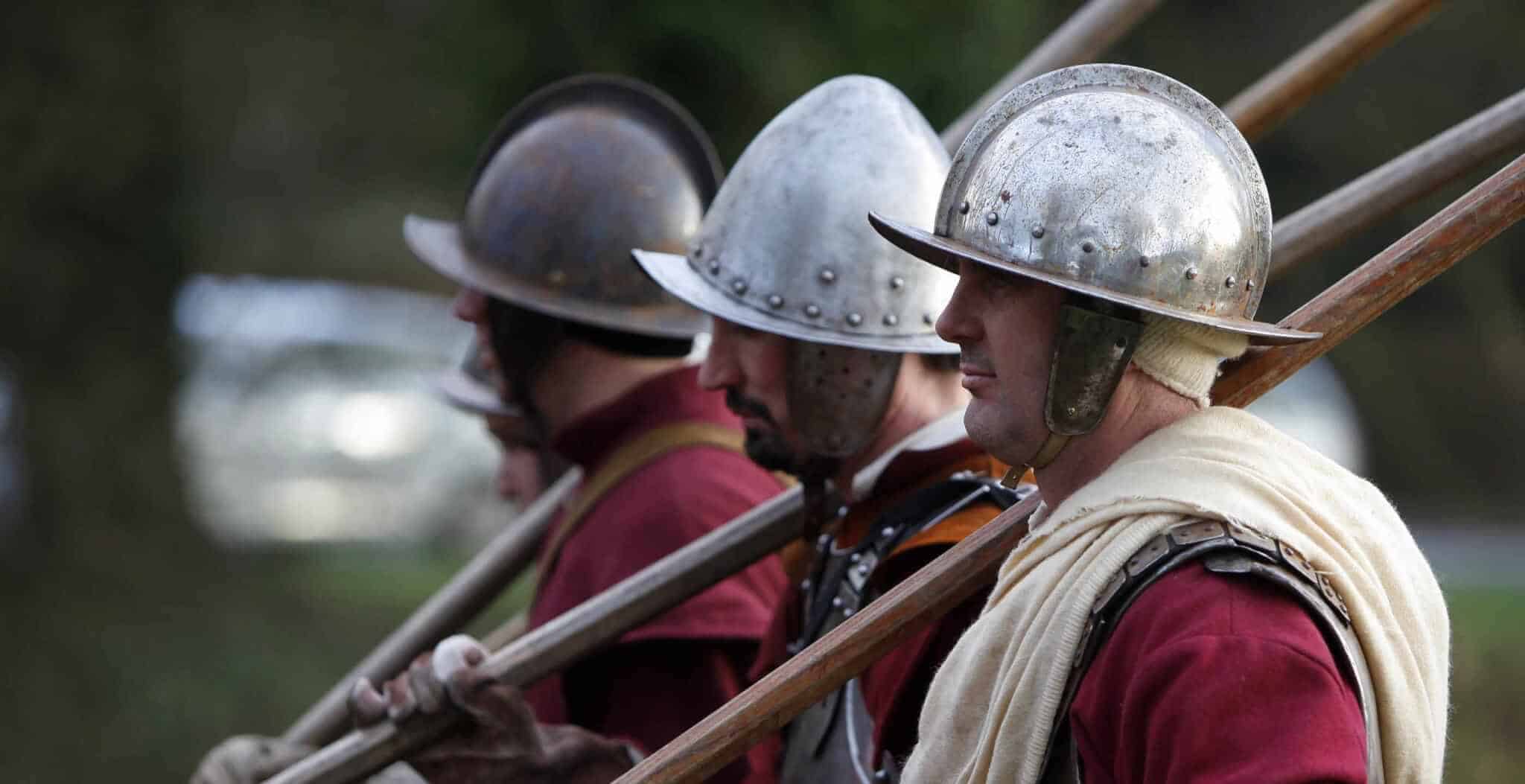England was split along lines that were partly territorial, partly social and economic, and partly religious. Royalist strength lay largely in the north and west, relatively less urban and less prosperous than other parts, and largely controlled by gentry who were loyal to throne and altar.
Parliamentary strength lay largely in the south and east, especially in London and in East Anglia, where Puritanism commanded wide support. The Scots were a danger to either side, distrustful of an English Parliament but equally distrustful of a king who had sought to put bishops over their kirk.
In the field, the struggle was at first indecisive. The royalists, or Cavaliers, recruited from a class used to riding, had the initial advantage of superior cavalry. What swung the balance to the side of Parliament was the development of a special force recruited from ardent Puritans in the eastern counties and gradually forged under strict discipline into the Ironsides. Their leader was a Puritan, Oliver Cromwell (1599-1658), who won a crucial battle at Marston Moor in 1644.
The parliamentary army, reorganized into the New Model Army and staffed by radicals in religion and politics, stood as Roundheads (from their short-cropped hair) against the Cavaliers. At the battle of Naseby in 1645, the New Model Army was completely victorious, and Charles in desperation took refuge with the Scottish army, who turned him over to the English Parliament in return for their £400,000 hack pay.
A situation now arose that was to be repeated, with variations based on time and place, in the French Revolution in 1792 and the Russian Revolution in 1917. The moderates who had begun the revolution and who controlled the Long Parliament were confronted by a much more radical group who controlled the New Model Army. In religion the moderates, seeking to retain some ecclesiastical discipline and formality, were Presbyterians or Low Church Anglicans; in politics they were constitutional monarchists. The radicals, who were opposed to churches disciplined from a central organization, were Independents or Congregationalists, and they already so distrusted Charles that they were thinking about a republican England. The situation was further complicated by the Presbyterian Scots, who regarded the Roundheads as religious anarchists.
The years after 1645 were filled with difficult negotiations, during which Charles stalled for time to gain Scottish help. In 1648 Cromwell heat the invading Scots at Preston, and his army seized the king. Parliament, with the moderates still in control, now refused to do what the army wanted—to dethrone Charles. The Roundhead leaders then ordered Colonel Thomas Pride (d. 1658) to exclude by force from the Commons ninety-six Presbyterian members. This the colonel did in December 1648, with no pretense of legality.
After “Pride’s Purge” only some sixty radicals remained of the more than five hundred original members of the Long Parliament; this remnant was known thereafter as the Rump Parliament. The Rump brought Charles to trial before a special high court of radicals, fifty-nine of whom condemned him to death. On January 30, 1649, Charles I was beheaded.
To the end he insisted that a king could not be tried by any superior jurisdiction on earth, that his cause was the cause of the people of England, and that if he could be silenced, so might all others. The monarchs of Europe now had their own martyr, and Parliament was, in the eyes of many in England, stained by a clearly illegal act.

